Critiquing “The Lord of the Rings”: A Necessary Evil?
Criticizing “The Lord of the Rings” is akin to complaining about the weather. The rain will fall regardless, and people will flock to this epic, if only to keep pace with the progressive masses who have already propelled the film to a $600 million box office. And rightly so – children will undoubtedly adore it, and even the adults might find a grudging, almost pleasurable, annoyance at what everyone else is raving about.

Critics, however, have a single lifeline: the fact that “The Fellowship of the Ring” is merely the first installment of a larger saga. Let’s offer a seemingly positive grumble, with the hope that director Peter Jackson and his team will improve as the story unfolds.
A Faithful, if Flawed, Adaptation
The adaptation of Tolkien’s classic is detailed and visually stunning. This was made possible not only by financial resources (a budget exceeding $100 million) but also by ideological alignment. “The Lord of the Rings” was originally a vehicle for popularizing the philosophical views of the late English author. His complex philosophy was rooted in religion, but not in the omnipotence of a deity. Instead, it championed the idea of God as the freedom to do good, as a natural inclination. To disseminate these views, he personified them through living beings, lands, and eras. The more he philosophized, the more this personified world expanded. Beyond humans, it included dwarves, elves, hobbits, wizards, and orcs. They inhabited the natural Middle-earth and the unnatural, dark Mordor, residing in trees and castles, tombs and taverns. Some craved power, others sought to taste it, while still others fled from it as if it were fire. This led to relationships and adventures, and because Tolkien had no limits to his imagination beyond his personal beliefs, these adventures and relationships made his world utterly magical.
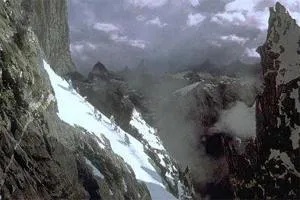
This is what the film latched onto. The magic was brought to life through special effects and computer graphics. This was a painstaking endeavor, requiring immense effort. For example, the New Zealand shoot used 1,600 pairs of individually fitted feet and ears, and 900 sets of handmade armor. The results were impressive: the wraiths in black cloaks on black horses, the tower of Saruman, the loathsome orcs, and the pastoral villages of the hobbits. All of these are accurate and vivid illustrations of the classic fairy-tale kingdoms. The fact that the hobbits are naturally small, roughly waist-high to humans, is particularly well-executed. It’s unclear how it was achieved, but the renowned actor Ian Holm (Bilbo) consistently appears waist-high to the equally famous Ian McKellen (Gandalf), even though they are the same height in real life. Everything involving water deserves special mention. It seems to lend itself perfectly to computer processing. When the elven princess creates a flood to escape the wraiths, the water in the river flawlessly takes the shape of a stampeding herd of horses. The opening war scene with Sauron and the crossing of the collapsing underground bridge are also fantastically organic, although they bear a strong resemblance to “Shrek” and “The Mummy Returns.”
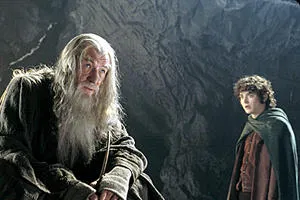
The casting choices were also made with a great sense of humor. Christopher Lee, with his half-century of experience playing Dracula, as Saruman provides a humorous context. Liv Tyler, noticeably heavier, as the elven princess elicits immediate laughter in the theater, but her beauty remains intact. Viggo Mortensen (Aragorn) and Sean Bean (Boromir), as the quintessential handsome heroes, also ring true.
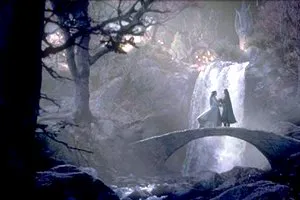
Where the Film Falters: Lost in Translation
Unfortunately, the flaws are always a consequence of the strengths. In his enthusiasm for bringing the fantastical elements to life, director Peter Jackson overlooked the wonders of intangible language and, along with the wordplay, discarded all of Tolkien’s philosophy. There is no longer anything complex, no associations or deeper meanings; everything is visible, and Jackson seems content with that. He failed to compensate for the lack of wordplay, even though he should have used humor to enhance the visuals. The less seriousness, the more laughter there should be – that cinematic context, like Christopher Lee, even if it deviates from the original. This is the transformation of the original into cinema, which is no less venerable than Tolkien’s classic.
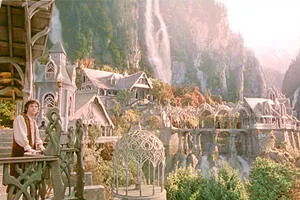
As a result, the journey of the hobbit Frodo and the Fellowship of the Ring to deliver and destroy Sauron’s ring in the depths of Mount Doom, filmed without seriousness and without humor, has lost all the tension of a unified plot and become almost self-serving. It’s simply one adventure after another, quite disparate, meticulously strung together for three hours, which becomes tiresome after just one. The attention to detail overshadows the purpose of the events, and the fairy tale, ceasing to be captivatingly interesting, ceases to be a fairy tale. What remains is a large, expensive, but ultimately just a list of illustrations. Lists have no beginning, middle, or end. The climax is everywhere and nowhere. Reverence for Tolkien’s name, without adhering to his spirit, has played a cruel trick on Jackson. The recent adaptation of Ron Hubbard’s work starring John Travolta is considered the worst Hollywood science fiction of all time, but, frankly, compared to “The Lord of the Rings,” “Battlefield Earth” is simply “The Three Musketeers.”
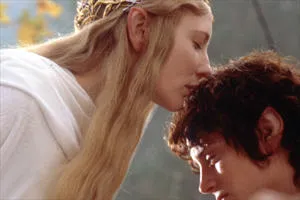
And when, out of boredom, you begin to scrutinize the presented illustrations, you gradually discover that you are being presented with a sham. Far more than wonders, there are long and tedious conversations clarifying “who is who.” It’s like a radio play, but with costumes. When the radio play is finally interspersed with fights, chases, and miracles, they are also filmed dishonestly. In the fights and battles, Andrew Lesnie’s camera is always very close to the combatants, and the shots are very short, so instead of creating a sense of presence, it creates a lack of overall impression. In short, the luxurious computer-generated castle in the land of black mountains and burned forests under a stormy sky is somehow separate, and the battle for the ring is separate and disjointed. The soundtrack is not bad in itself, but it is well known that music in film is good when it is inaudible. Here, not only is everything audible, but empty shots are openly flooded with powerful orchestras, or, for example, Gandalf’s mysterious descent into the library is accompanied by some cheerful Charleston music. Even in terms of direction, it is very, very far from “Gladiator.”
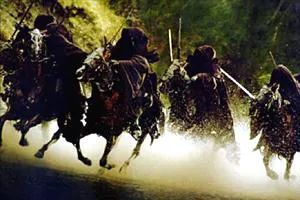
And so on. It is clear that the “main hook” is also, in general, underdeveloped. The fearsome Uruk-hai are not fearsome, but fake. They have some silly patches on their foreheads. And when a giant troll fights the Fellowship in one of the underground caves, the technique simply doesn’t work. It looks no more authentic than the monsters from some half-century-old “Seventh Voyage of Sinbad,” where there was a simple puppet theater without any computer graphics. And one more thing: the main character, the hobbit Frodo, is just too unpleasant. Twenty-year-old Elijah Wood looks more like a girl, pretty, with a doll-like face, and yet he cannot be replaced in all three installments.
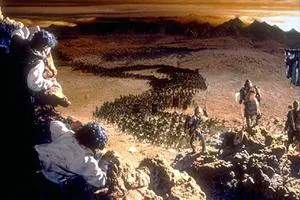
Hope for the Future?
However, much can be corrected in the sequels to the adaptation. Another $100 million can be invested in the technology, and even the composition of the whole can be changed.
If “The Fellowship of the Ring” is only the beginning, then the climax may be ahead, it just needs to be unusually dense in everything: in directing, in effects, in sound, in editing. But is Jackson capable of anything unusual other than mastering the budget?